The liberation of Amsterdam on May 5th, 1945, marked a pivotal moment in the city’s history, as Canadian troops entered and brought an end to five years of Nazi occupation. This joyous occasion saw crowds celebrating the freedom they’d long awaited, hoisting the Dutch flag in a powerful display of resilience. Though the horrors of the Holocaust and the struggles endured during the occupation cast a somber shadow, the liberation symbolized hope and the triumph of the human spirit over adversity. What happened next would shape the city’s future in profound ways.
Good To Know
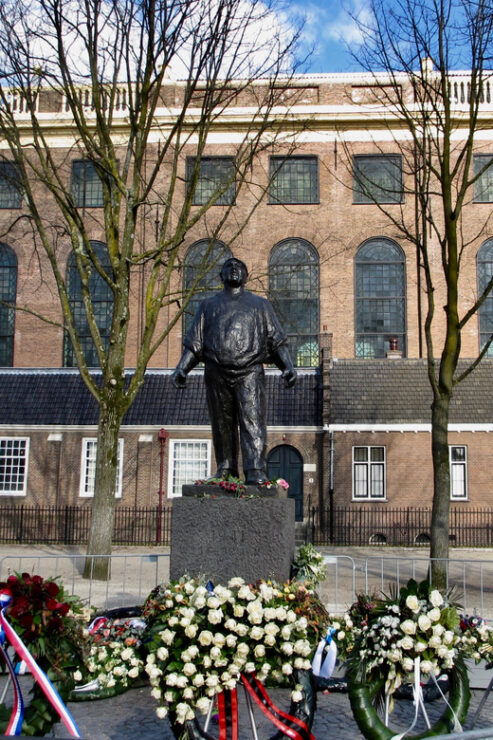
Key points:
- The liberation of Amsterdam from Nazi occupation occurred on May 5th, 1945, when Canadian troops entered the city, ending five years of German control.
- The liberation celebrations were quickly overshadowed by the Hunger Winter, a severe food shortage that led to widespread starvation and malnutrition among the Dutch population.
- The Dutch Resistance Movement, which engaged in covert operations, strikes, and protests against the Nazi occupation, played a crucial role in aiding the rescue of Jews and hiding fugitives.
- Poignant memorials and monuments throughout Amsterdam, such as the National Holocaust Memorial and the Auschwitz Monument, honor the victims of the Holocaust and inspire values of tolerance and human dignity.
- The historic Jewish Quarter in Amsterdam, with its distinctive architecture and the Jewish Historical Museum, symbolizes the resilience and enduring spirit of the Jewish community in the face of persecution.
The Old Jewish Quarter
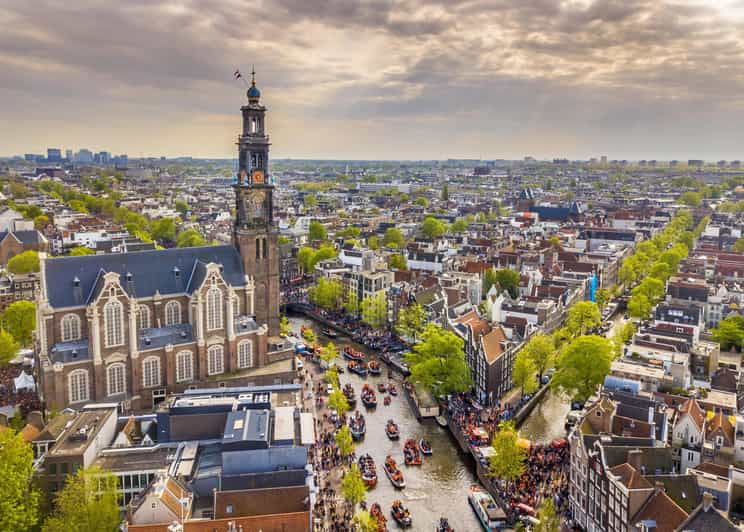
The Old Jewish Quarter, or Jodenbuurt, was once the heart of Amsterdam’s vibrant Hebrew community.
This historic neighborhood, now a popular tourist destination, offers a window into the city’s rich Jewish heritage. Visitors can explore the Jewish Historical Museum, which chronicles the community’s past, and the National Holocaust Memorial, a powerful tribute to those who perished during the Nazi occupation.
The area’s winding streets and distinctive architecture provide a tangible connection to Amsterdam’s Jewish roots, reminding all who walk its paths of the resilience and enduring spirit of this community.
Find more activities and experiences we've covered in Amsterdam.
The Dutch Resistance Movement
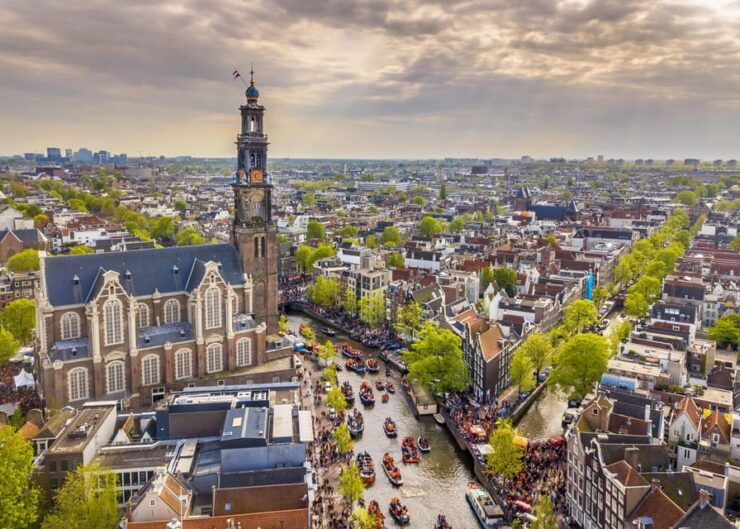
Amidst the Nazi occupation of the Netherlands, a resilient force of citizens emerged, united in their determination to resist the oppressive regime.
The Dutch Resistance Movement grew rapidly, engaging in covert operations, strikes, and protests to undermine German control. They aided in the rescue of Jews, hid fugitives, and sabotaged infrastructure.
Key figures like Hannie Schaft, known as "the Girl with the Red Hair," became symbols of the movement’s bravery.
The Resistance’s efforts culminated in the Amsterdam February Strike of 1941, a mass protest against the persecution of Jews that was brutally suppressed.
Though facing immense risks, the Dutch Resistance remained steadfast in their fight for freedom throughout the occupation.
Deportations and Significant Events
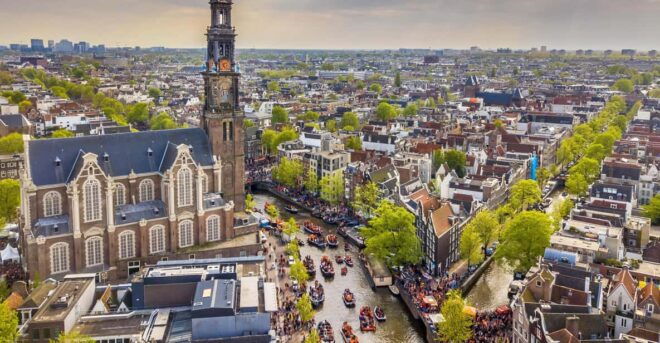
Alongside the Dutch Resistance‘s courageous efforts, the Nazi occupation of the Netherlands saw devastating deportations and significant events that forever shaped the nation’s history.
Tens of thousands of Dutch Jews were deported to concentration camps, with many perishing in the horrors of the Holocaust. The shooting in Dam Square and the Hunger Winter that followed further devastated the population.
Memorials like the Auschwitz Victims Memorial and the Holocaust Museum now stand as reminders of these tragic events.
Through these dark times, the determination of the Dutch people never wavered, as they continued to resist the occupation and fight for their freedom.
Memorials and Monuments
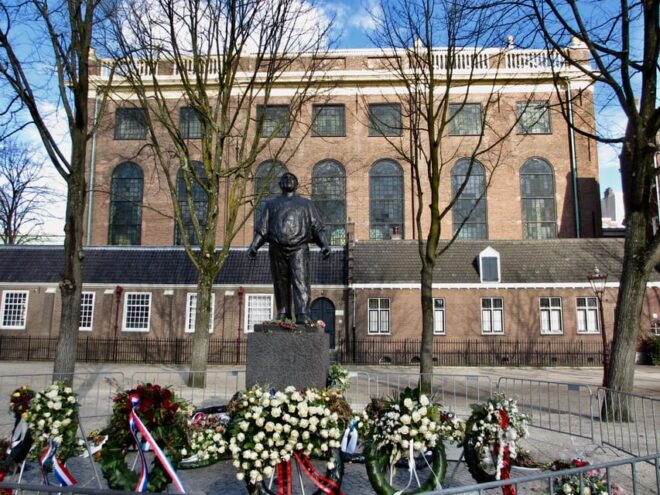
Scattered across Amsterdam, a series of poignant memorials and monuments stand as powerful testaments to the city’s dark history during the Nazi occupation.
These sacred spaces serve as reminders of the horrors endured and the resilience of the Dutch people. Among the most prominent are:
- The Homomonument, honoring the LGBTQ+ victims of persecution
- The National Holocaust Memorial, engraved with the names of over 102,000 Dutch Jews murdered in the Holocaust
- The Auschwitz Monument, a sobering tribute to those deported to the infamous death camp
These sites of remembrance provide a solemn reflection on the past, inspiring visitors to uphold the values of tolerance, justice, and human dignity.
More Great Tours NearbyThe Liberation of Amsterdam
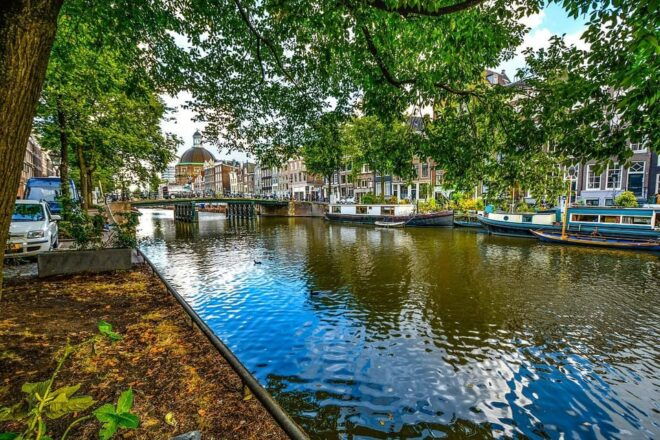
When did the liberation of Amsterdam finally arrive? On May 5th, 1945, the city was freed from Nazi occupation after nearly five years of German control.
Canadian troops entered the city, marking the end of the brutal Nazi regime’s grip on the Dutch capital. The liberation was celebrated with joyous crowds and the hoisting of the Dutch flag.
It was a long-awaited moment of triumph for the people of Amsterdam, who’d endured the horrors of the Holocaust and the harsh realities of Nazi occupation.
The city’s freedom came at a great cost, but the resilience and determination of its residents prevailed in the face of unimaginable adversity.
The Hunger Winter
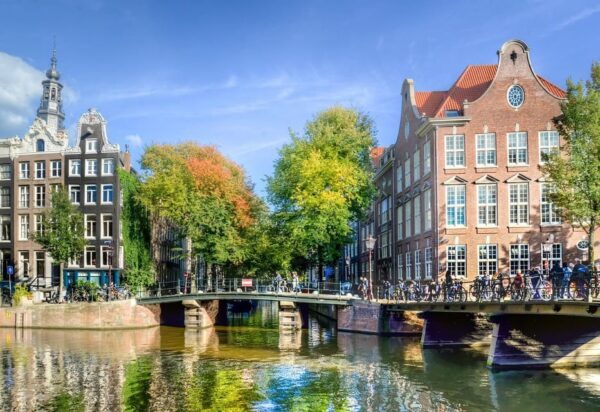
The joyous celebrations marking the liberation of Amsterdam were short-lived as the city soon faced another devastating challenge – the Hunger Winter.
With food and fuel supplies depleted, the harsh Dutch winter took a severe toll on the population.
The Hunger Winter was characterized by:
- Severe food shortages, leading to starvation and malnutrition
- Widespread power outages and lack of heat, resulting in freezing temperatures
- Increased mortality rates, especially among the elderly and young children
Despite the hardships, the resilient people of Amsterdam banded together, sharing what little resources they’d and supporting one another through the darkest days of the winter.
Tram Tickets and Multimedia
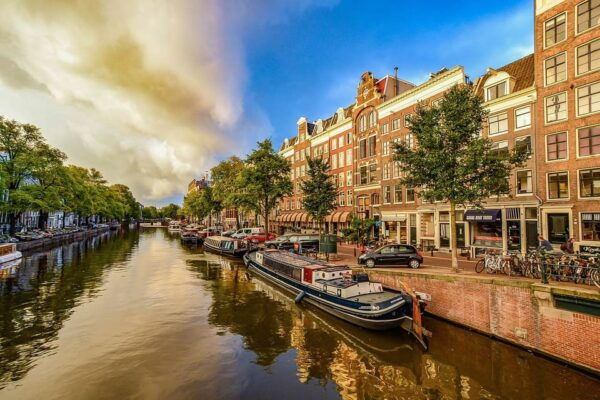
One key inclusion in the tour is the provision of tram tickets, allowing participants to conveniently navigate the city’s public transportation system. This helps to ensure a seamless experience as the group explores the significant historical sites across Amsterdam.
Plus, the tour utilizes multimedia tools and stock footage to enhance the educational experience. These visual aids provide context and complement the live commentary from the knowledgeable guide, bringing the past to life in a more immersive manner.
The combination of transportation and multimedia elements helps to create a comprehensive and engaging tour that deepens the participants’ understanding of Amsterdam’s wartime history.
Visiting Guidelines and Inclusions
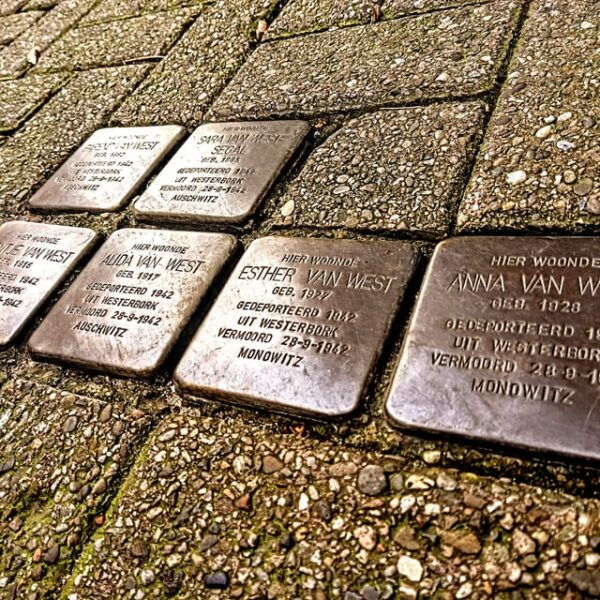
Participants meet the group at the Rembrandt House Museum, where they’ll find tour guides holding white and blue umbrellas.
The tour has specific guidelines to ensure a smooth and respectful experience. Attendees should dress appropriately for the weather and avoid bringing large bags, bikes, alcohol, drugs, baby carriages, and items that could cause noise or disturbance.
The tour may be canceled in the event of severe weather conditions, as it operates based on national weather alerts.
The tour includes:
- English-speaking guide
- Tram tickets
- Multimedia tools and stock footage
- Entrance tickets to museums (except Anne Frank Museum)
Frequently Asked Questions
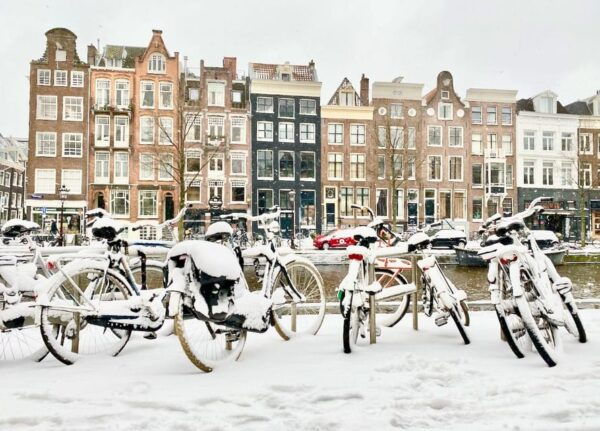
Are Strollers and Baby Carriages Allowed on the Tour?
According to the tour overview, baby carriages are not allowed on the tour. The guidelines specifically state that "large bags, bikes, alcohol, drugs, baby carriages, noise-making, military-style clothing, and party groups" are not permitted.
How Can I Purchase Tickets for the Anne Frank Museum?
The tour doesn’t include admission to the Anne Frank Museum. It’s recommended to buy Anne Frank Museum tickets at least 6 weeks in advance to secure your spot and avoid long lines.
What Is the Cancellation Policy for This Tour?
The tour has a free cancellation policy – participants can cancel up to 24 hours in advance for a full refund. This provides flexibility and allows customers to plan their trip with confidence.
Is This Tour Suitable for People With Mobility Issues?
Yes, this tour is wheelchair accessible. According to the tour details, the tour is listed as "Wheelchair accessible", so it should be suitable for people with mobility issues.
Can I Bring My Own Food and Drinks on the Tour?
According to the tour details, outside food and drinks are not allowed on the tour. The tour operator recommends bringing weather-appropriate clothing, but no large bags, bikes, alcohol, drugs, or baby carriages are permitted.
The Sum Up
The liberation of Amsterdam marked a triumphant moment, symbolizing the resilience and indomitable spirit of its people. Though the city endured the horrors of occupation and the tragedies of the Holocaust, the joyous scenes of celebration and the raising of the Dutch flag demonstrated the power of hope to prevail over adversity. The liberation paved the way for Amsterdam’s renewal, as the city began to heal and rebuild in the aftermath of the war.
You can check availability for your dates here: More Great Tours NearbyMore Tour Reviews in Amsterdam
Looking for something different? Other Amsterdam activities we've written about
- Bruges Day trip from Amsterdam
- Cross Into Belgium from Amsterdam: Unique Border Day Trip!
- From Amsterdam: Day Trip to Formula 1 Belgium Grand Prix
- From Amsterdam: Cologne & Antwerp Full-Day Tour
- From Amsterdam: Private Tour to Bruges with Guide
- From Amsterdam: Private Day Trip to Bruges
- From Amsterdam: Private Sightseeing Tour to Bruges
- Amsterdam Aperol Spritz Cruise
- Amsterdam Sightseeing Canal Cruise with Audio Guide
- 5 Hours Private Tulip Experience at Keukenhof Gardens
- Amsterdam Self-Guided Food Walk: City Bite Tours
- Private Zaanse Schans and Volendam Tour from Amsterdam
